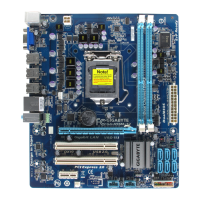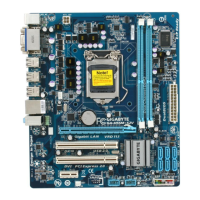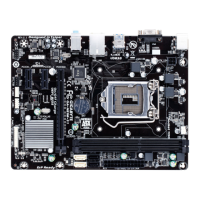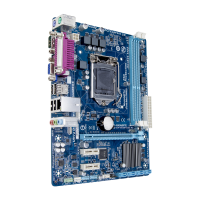
Do you have a question about the Gigabyte GA-H55-UD3H and is the answer not in the manual?
| Non-ECC | Yes |
|---|---|
| Number of memory slots | 4 |
| Maximum internal memory | 16 GB |
| Processor socket | LGA 1156 (Socket H) |
| Processor manufacturer | Intel |
| Number of COM connectors | 1 |
| Number of SATA connectors | 6 |
| Controller interface type | SATA2 |
| Controller 2nd interface type | ATA-133/100/66/33 |
| USB 2.0 ports quantity | 8 |
| Firewire (IEEE 1394) ports | 0 |
| Audio chip | Realtek ALC889 |
| Audio output channels | 7.1 channels |
| Motherboard form factor | ATX |
| Compatible operating systems | Microsoft Windows 7/Vista/XP |
| Networking features | 10/100/1000 Mbit/s |
| BIOS type | AWARD |
| ACPI version | 1.0b |
| Depth | 210 mm |
|---|---|
| Width | 305 mm |
Guide to installing chipset drivers using the Xpress Install utility.
Details on GIGABYTE utilities and free software for installation.
Information on application guides, driver disk, and motherboard manuals.
GIGABYTE contact information for support and inquiries.
Displays basic system information and hardware details.
Links to GIGABYTE website for updating BIOS, drivers, and applications.
Provides links to GIGABYTE's latest developed utilities for installation.
Utility for compressing, backing up, and restoring system data.
Tools like Q-Flash and @BIOS for updating system BIOS.
Software for fine-tuning system settings, overclocking, and fan control.
Technology for unparalleled power savings and enhanced efficiency.
Tool for easy and convenient data sharing over a LAN network.
Suite of utilities for PC system management, performance boost, and recovery.
Tool to enable system power savings via a Bluetooth cell phone.
Guide to configuring motherboard audio jacks for input/output.
FAQs and troubleshooting procedures for system startup issues.
Notices regarding copyright, RoHS, WEEE, and China RoHS compliance.
Guidelines for safe installation to prevent damage from ESD.
Details on CPU, Chipset, Memory, Graphics, Audio, LAN, Expansion Slots, Storage.
Step-by-step guide for CPU and cooler installation.
Instructions for installing DDR3 memory modules.
Procedure for installing expansion cards into slots.
Description of ports on the motherboard's rear panel.
Identification and function of internal motherboard connectors.
Displays the initial screens shown during computer boot.
Overview of the main BIOS Setup screen options.
Settings for CPU/memory frequencies, voltages, and overclocking.
Configuration for system date, time, and IDE/SATA devices.
Settings for boot order, passwords, and system performance.
Configuration for onboard devices like SATA, USB, LAN, and Audio.
Settings for ACPI sleep states and power-on options.
Monitoring of system voltages, temperatures, and fan speeds.
Loads the safest, most stable BIOS default settings.
Loads the optimal BIOS default settings for performance.
Sets passwords to protect BIOS Setup access.
Saves changes made in BIOS Setup and exits the program.
Exits BIOS Setup without saving any changes.











